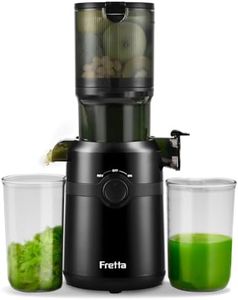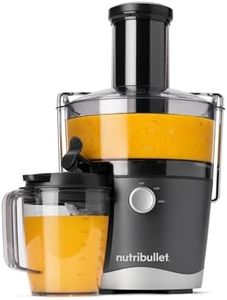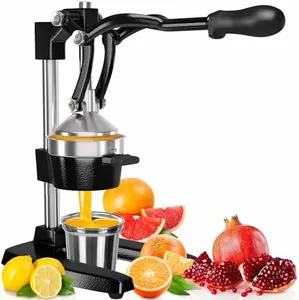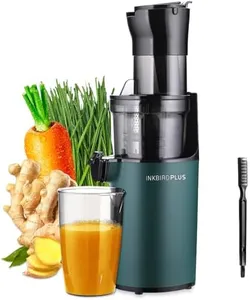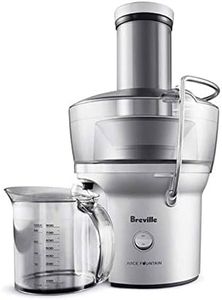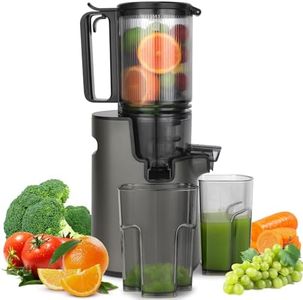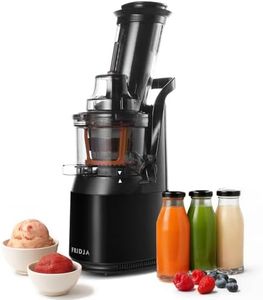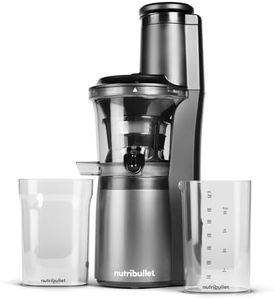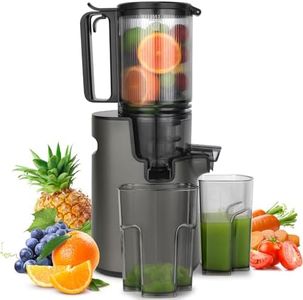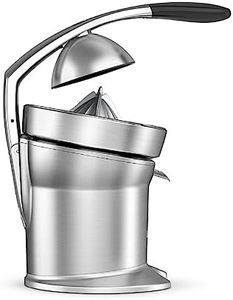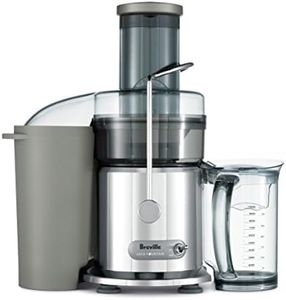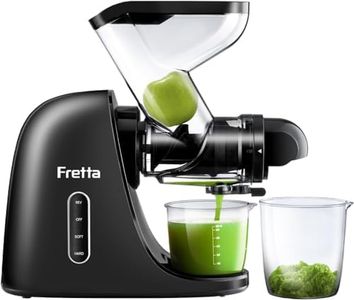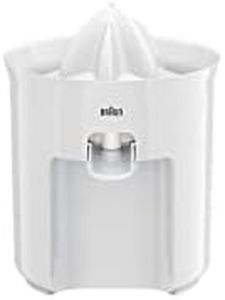We Use CookiesWe use cookies to enhance the security, performance,
functionality and for analytical and promotional activities. By continuing to browse this site you
are agreeing to our privacy policy
10 Best juicer
From leading brands and best sellers available on the web.Buying Guide for the Best juicer
Choosing the right juicer starts with understanding your habits and needs. Think about how often you’ll use the juicer, what types of fruits and vegetables you plan to process, and how much time you want to spend on prep and cleaning. A good juicer should fit into your routine, making healthy juices accessible and enjoyable without becoming a hassle. Focus on features that make your life easier and support your preferred juice ingredients.Type of JuicerThere are mainly two types of juicers: centrifugal and masticating (slow) juicers. Centrifugal juicers use fast-spinning blades to separate juice from pulp and are typically faster but can be noisier and may not extract as much juice from leafy greens. Masticating juicers work at a slower speed, crushing fruits and vegetables to extract juice, which preserves more nutrients and works well for leafy greens but takes more time. If you value speed and convenience, a centrifugal juicer may suit you, while masticating juicers are ideal if you prioritize nutrient retention or juicing a variety of produce, including greens.
Juice YieldJuice yield refers to how much juice you get from a given amount of produce. Higher yield means less waste and more juice per serving. Masticating juicers typically have higher yields, especially on leafy items, while centrifugal juicers might leave wetter pulp. If you want to maximize every bit of your fruits and especially vegetables or plan to juice large quantities, look for a juicer known for high juice yield.
Ease of CleaningEase of cleaning is about how simple it is to take apart, wash, and reassemble your juicer. Juicers with more removable parts or complex strainers can be harder to clean, which can discourage frequent use. Centrifugal juicers are often a bit easier to rinse, while masticating models may have additional parts. If you want to juice regularly, choose a model with dishwasher-safe (if possible) parts and a straightforward assembly.
Noise LevelNoise level indicates how loud the juicer is when operating. Centrifugal juicers tend to be much louder due to their high-speed spinning blades, while masticating juicers are quieter as they operate slowly. If you have a sensitive household, need to juice early in the morning or at night, or simply prefer a quieter appliance, a model with a lower noise level might be important to you.
Feed Chute SizeThe feed chute is where you insert fruits and vegetables into the juicer. Larger feed chutes allow you to put in bigger pieces, meaning less chopping and prep time. A small feed chute means you’ll need to cut everything into smaller pieces, which can be time-consuming. If you want to save time and effort, look for a juicer with a wide feed chute, especially if you plan to juice firm or large produce like apples or carrots.
Pulp Control and EjectionSome juicers have features that let you control how much pulp ends up in your juice, or they eject the pulp into a separate container for easy disposal. This is helpful if you have a preference for smooth or pulpy juice, or if you want to manage cleanup more easily. If you care about the texture of your juice or easy disposal of leftovers, check for these options.
Durability and Material QualityDurability is about how well the juicer is built and how long it will last under regular use. Models made mostly from stainless steel and high-quality plastics tend to last longer than those with flimsy parts. If you plan to juice frequently or use tough ingredients, look for a solid build with durable components to ensure your juicer stands the test of time.

